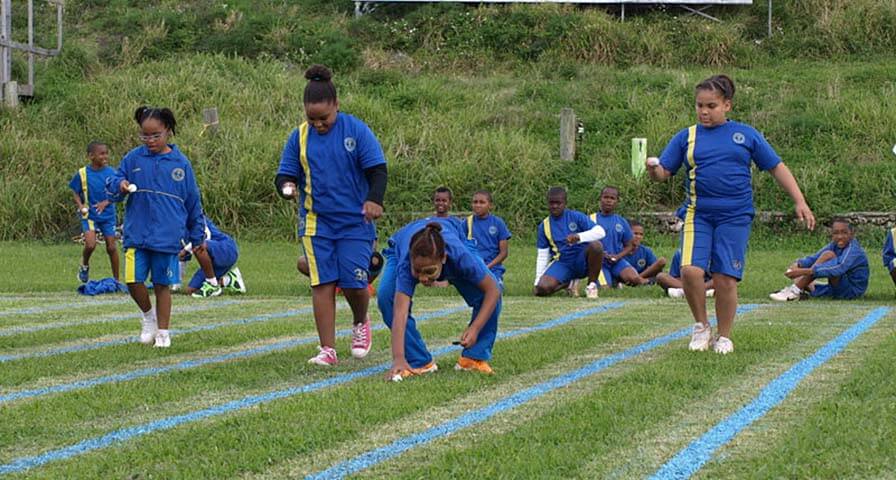Tasked with increasing student activity during the school day, Bermuda’s Physical Education and Health Curriculum officer developed school improvement plans that focus on student fitness testing.
Hired in 2014, Arnold Manders worked with his country’s Ministry of Education and Interactive Health Technologies to create a fitness model that would empower teachers to motivate students to increase their physical activity level, both during school and at home.
“Our sole purpose is to increase the physical activity of all of our kids in Bermuda. Primary schools only have 120 minutes of PE a week, middle school 120 minutes a week and high school students 220 minutes a week but only for a semester,” Manders said. “This falls well below the recommended 60 minutes a day.”
Manders worked with IHT to develop the Premier’s Youth Fitness Program, based on the U.S. Presidential Youth Fitness Program. Integrated with new PE technology that includes the IHT Zone wrist heart rate monitor and the IHT Spirit System assessment software, Bermuda’s PYFP measures student fitness in a number of tests with three main goals:
- Increase the time students spend exercising during the school day;
- See 70 percent of students reach desired fitness levels on three of five mandatory assessments; and
- Correlate student fitness with academic performance.
Bermuda’s focus on student fitness became a top priority after a World Health Organization report named Bermuda near the top of a list of countries with populations lagging in physical fitness, especially among its youth. Upon taking his post, Manders found that Bermuda’s PE teachers had not been assessing student fitness, so he created the new plan with the goal of reversing the troubling trend.
“There will be rewards/awards for schools and students with the most physical activity,” he said. “It is hoped that by implementing the Premier’s Youth Fitness Program that our students will be encouraged to do more outside of school and record/track their minutes of physical activity in and outside of school.”
Wearing the IHT Zone wrist heart rate monitors during class, students see the heart rate zone in which they are exercising. Following class, the Spirit System delivers each student a personalized report providing them with important data necessary to evaluate that day’s workout and help motivate each student to improve in the next workout.
Teachers work toward two key assessment dates. Manders said students are given a beginning assessment by Oct. 31 and then a year-end assessment by May 31. The Premier’s Youth Fitness Plan also included fitness goals in each school’s campus improvement plan, a key change.
“We also mandated that every school include a fitness and health goal in their School Improvement Plans derived from the results of the fitness testing,” he said.
Teachers use the Spirit System software to track student progress throughout the year. While PE remains the primary focus, Manders wants teachers to stress that fit students become better overall learners.
“It also focuses on PE’s greatest needs: correlating individual student fitness with academic performance, streamlining classroom management and empowering students to self-manage their well-being, for life,” Manders said.


